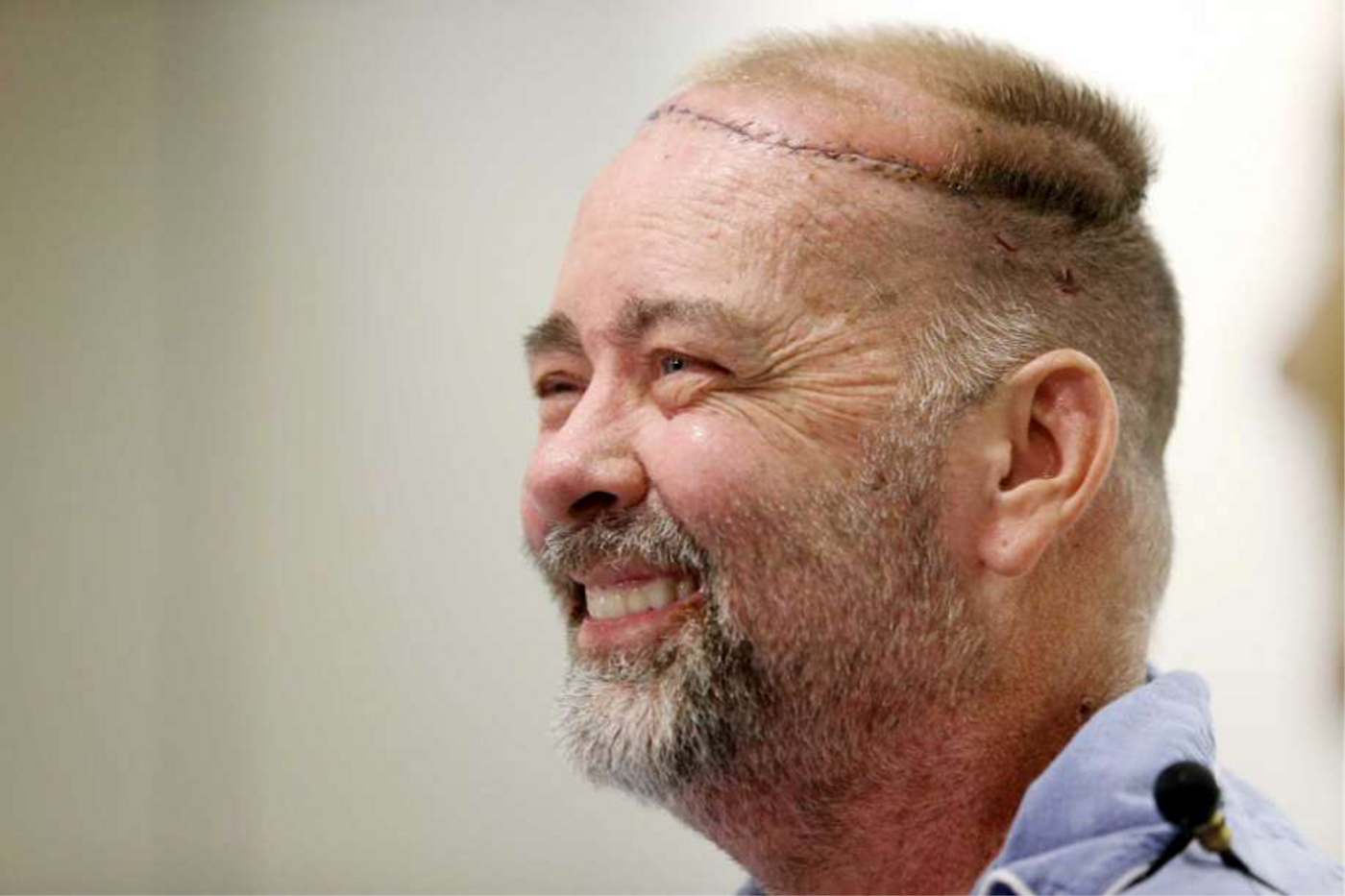In a medical first, doctors from Houston, Texas reported a simultaneous scalp, skull, kidney, and pancreas transplant from one donor to a recipient. The drastic, never-been-done-before procedure allowed a patient to reclaim better health outcomes that would otherwise not be possible. Additionally, doctors hope this medical case will open the door for more combined transplants in the future.
The recipient of this landmark procedure is a 55-year-old man who has type 1 diabetes. The patient underwent kidney and pancreas transplantation over 20 years ago, but the kidney organ is now failing. In 2005, the patient developed an aggressive cancer on his scalp that was successfully treated, but left him with a large, non-healing scalp wound that was prone to severe infections.
His team of doctors weighed their options to treat the multi-organ complications in this patient. They concluded that a scalp and skull transplant could be performed at the same time the kidney and pancreas transplant was taking place, provided the organs came from the same donor.
The scalp and skull transplantation is different than the solid organ transplant in that it involves connecting multiple types of tissues, like skin, muscle, blood vessels, nerves, and bone. Known as vascularized composite allotransplantation, or VCA, the procedure requires a lifelong need for immunosuppressive therapy to prevent rejection. Previous face and hand transplants proved the success of VCA, but doctors have not attempted to combine VCA with other organ transplants at the same time.
In the case of this diabetic patient who was already taking immunosuppressive medications, the scalp/skull VCA combined with the double organ transplant seemed a to be a viable measure to both the doctors and the patient.
It took 18 months to find a suitable deceased donor who matched the patient’s immune type, head size, skin color, and hair pattern. Then it took 20 surgeons 15 hours in the operating room to make the transplant a success.
Doctors noted the transplants received adequate blood supply and seemed to function normally. The patient experienced a brief episode of rejection with the scalp/skull transplant that was successfully thwarted. A year later, the patient is reported to be in good health, benefiting from his transplanted organs and the corrected defect on his skull.
"Hopefully, this case and others like it will help to widen the narrow indications for this fascinating new field of reconstructive surgery," said Jesse Creed Selber at the University of Texas M.D. Anderson Cancer Center, first author of the report.
Additional source:
EurekAlert!,
Plastics and Reconstructive Surgery Journal









